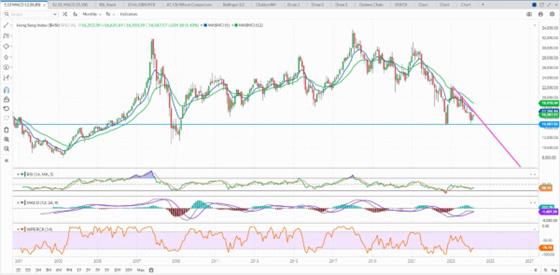
6 minute read
MARKET INSIGHTS: WHAT WE’RE WATCHING
Economics
• Inflation is still hanging on (3.2% as of 3/12/24 - far from the Federal Reserve’s 2% target) and that is usually bullish for commodities.
• As of late, China has had a rough go economically and the cancellation of roughly 30% of the SRW wheat they bought from the U.S. isn’t a great sign. That said, each week we review some ‘Macro’ charts and figures to stay in tune with the broader market. Below is the Hang Seng Index (Chinese equities market) in a monthly view stretching back to 2000. Looking at the chart alone, there may be a case for the Chinese equities market to find some footing in the near term. If March closes in the green, this could be something to watch, especially since part of our bearish bias has been on the poor performance of the Chinese economy over the past three years.
Weather
• Of particular interest this year is the impending transition from El Nino to La Nina. Most every forecaster you listen to says it will happen, but there are huge disagreements on how fast the transition will happen. Traditionally, the faster the transition, the higher the chance of hot, dry weather in the heart of the Corn Belt. Right now, it’s hard to find two summer forecasts that are making the same prediction.
• The chart below shows that last April through June was historically dry and planting progress was not impeded at all. If this spring is anything close to last spring, this will be another bearish factor we will need to deal with.
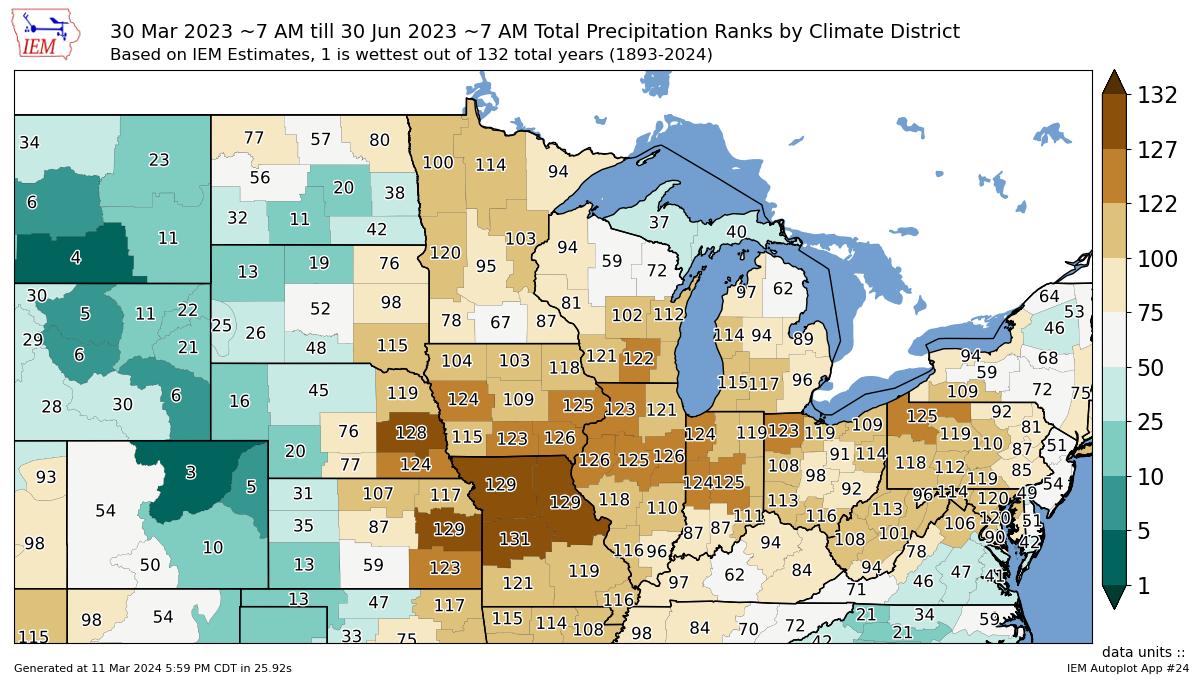

• This past February through the first half of March is one of the hottest on record and although we have seen some rain events, many places in the Midwest are coming into the spring very dry. Last fall was perfect for putting on fall-applied anhydrous and there is a lot of fieldwork already accomplished this spring.
• NOAA expects near normal temperatures for the next few weeks, but the pattern may become much more active on rain amounts.
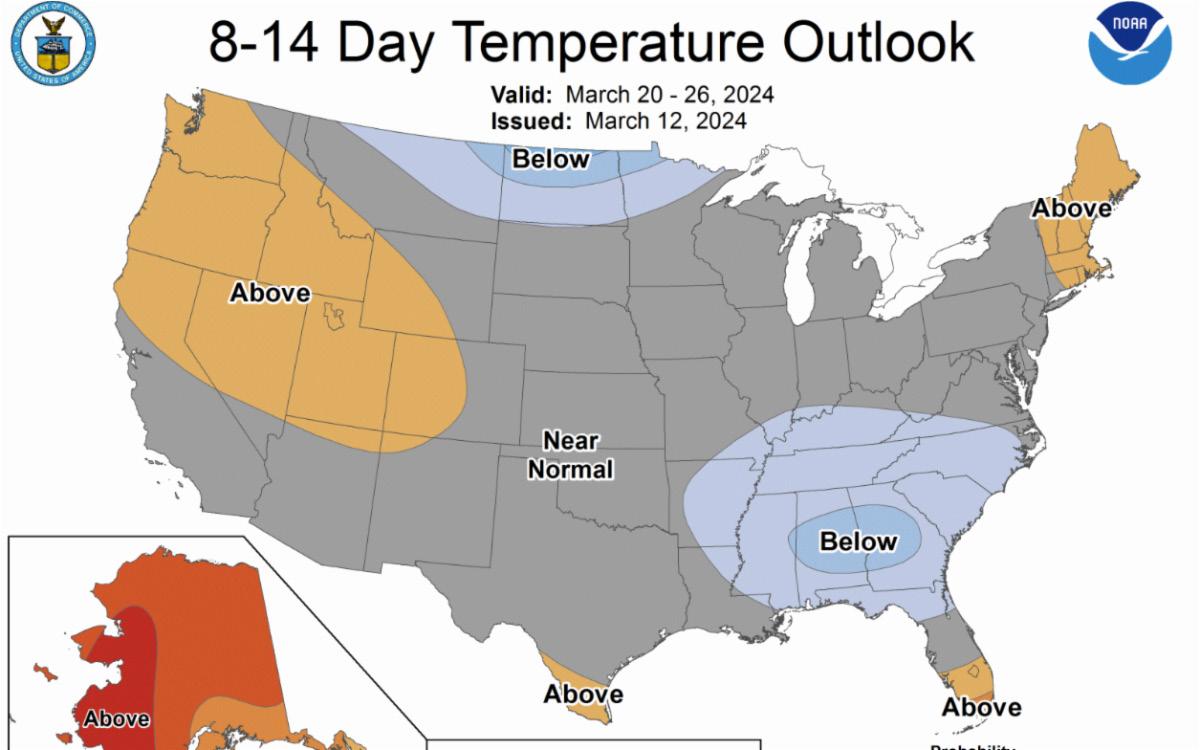
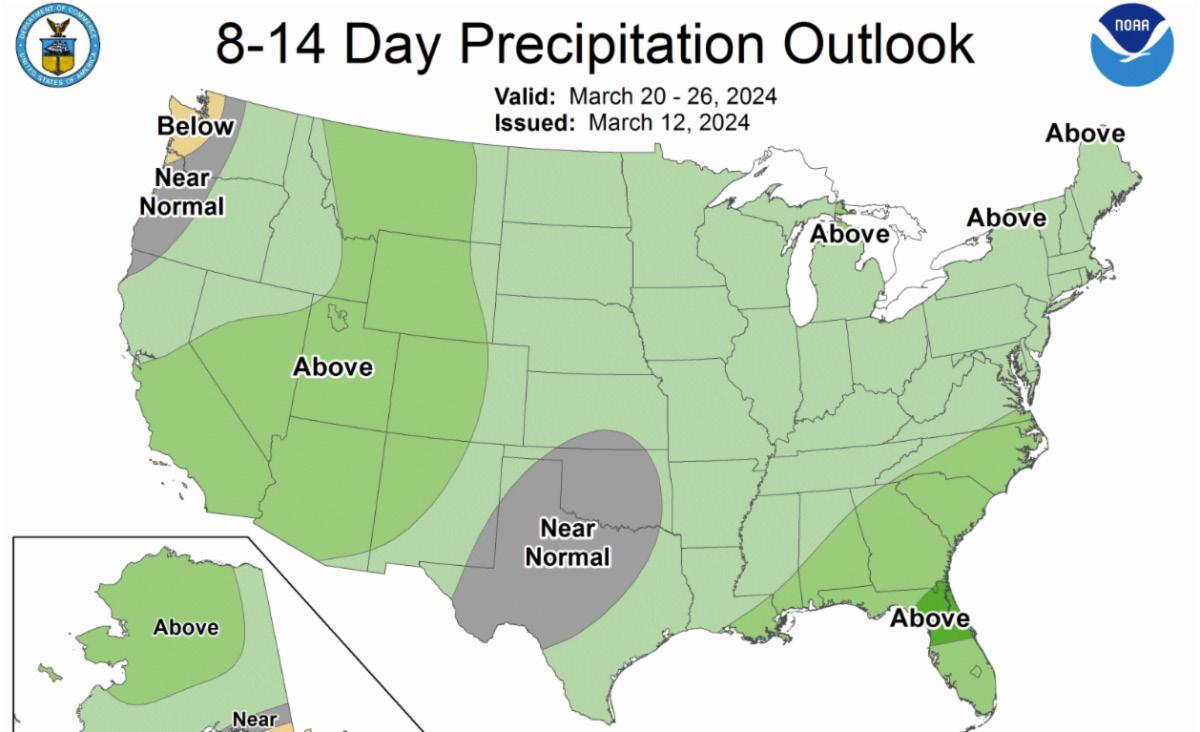
Global Events
• During the beginning of the Ukraine war, money flowed to commodities and any “new” news there affected our markets. Now, as the conflict is in its second year, it is barely a blip on the radar as far as grains are concerned.
• Russia has continued to flood the world with cheap wheat and Ukraine continues to export grain through the Black Sea. The assumption in the past was that Russia would make Black Sea exports impossible for Ukraine, but in reality, that has not been the case. Russia needs to have the Black Sea ‘open’ to sell its wheat and raise money to fund its war effort. Russia also has a stake in developing allies. Preventing grains from moving out of Ukraine probably is not in their best interest politically.
COMMODITIES - CORN
• Old and new crop corn have both performed well in March and have recovered nearly 30 from the February lows. Looking at the chart below, will we have enough momentum to continue the move?
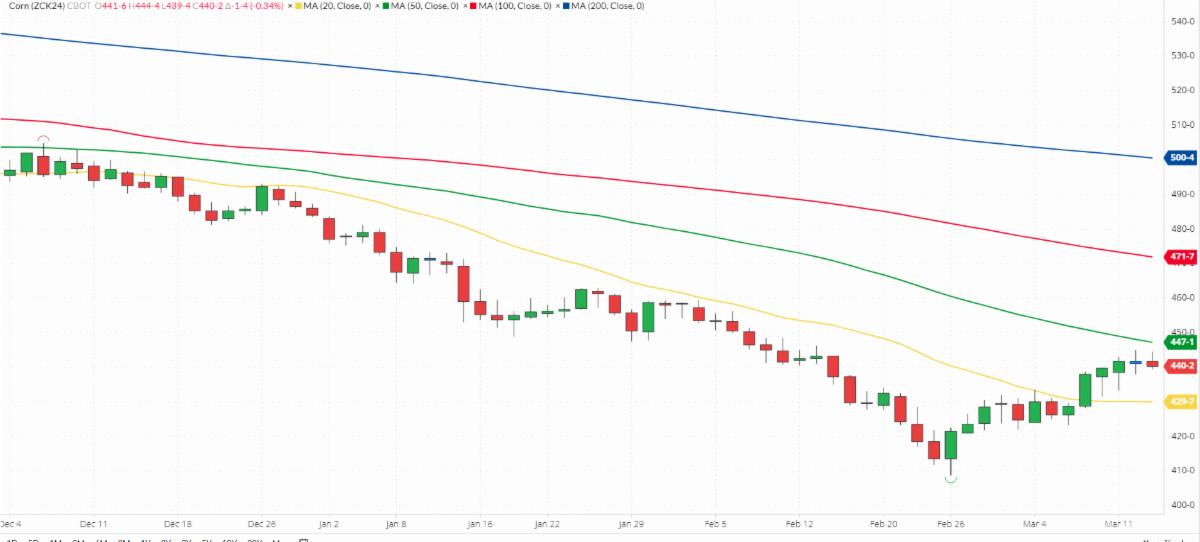

• The funds continue to liquidate their record short positions, but farmer selling is increasing on each move higher.
• We continue to feel that setting floors, especially with old crop, is the way to play this out this spring. The fundamentals have not changed and we are still burdened with too much carryout and large farmer-owned supplies. EMMs vs the May and July contracts are the safest play here where you set a floor and hope for more. Talk to your local CGB grain merchandiser for current levels on those contracts.
• We could very well see the market rally into late spring, but please remember that we have a very important report on planted acres on the 28th of March. We can ill afford to see corn acres much more than 91 million. A surprise to the high side will be a heavy burden on new crop corn. If the weather is cooperative and planting goes well, we will need to see a major shift in the summer weather patterns to generate buying interest.
• This is a time to get a plan together and execute when your targets are hit.
COMMODITIES - SOYBEANS
• Rarely have we seen such a disparity in the estimates of the crop size in Brazil. CONAB, Brazil’s equivalent of our USDA, is estimating a 146.9 mmt crop. The 2.5 mmt haircut now puts the USDA 8.1 mmt higher than CONAB. (In bushels, the difference is nearly 300 million. That is basically the entire U.S. projected carryout!)
• The USDA in January and March also raised their estimates of last year’s Brazilian crop. They seem to believe that acre expansion in Brazil has been more aggressive than advertised and they are basing their increases on the record exports that have been coming from Brazil for the past 18 months.
• The old crop May contract is now firmly above the 20-day moving average and cash beans are within striking distance of $12.00. This 70-cent rally has increased farmer selling, as it should. With the March 28th acreage report just around the corner, one should, at the very least, consider locking in some $11.70 floors with EMM contracts.

• The U.S. export market for soybeans is living on borrowed time and it is reflected in the river basis markets. When considering interest on $12.00 beans at 7 cents a month, there is little incentive to carry the beans into the summer.
• There have been several articles circulating recently that farmer bankruptcies in Brazil are up 535% in 2023. Serasa Experian, a data service company, said that most of the filings were soybean farmers, but cattle ranchers and coffee growers have also seen notable increases. Although the number of filings is low compared to the number of farmers, the pace of filing from quarter to quarter is alarming. High-interest rates seem to be the main cause.
• Soybeans do not spend much time trading in the $11.00 range. We are much closer to $12 than we have been and the market should be rewarded ahead of the March 28th Prospective Planting Report. Most likely the trade will be reminded once again that acres of soybeans will be increasing with some estimates as high as 3 to 4 million more over 2023. Rewarding this rally now, before the report is good risk management.
• The November futures contract has breached the 50-day moving average as the funds continue to cover some of their record shorts. This calendar year, all of the short rallies that we have seen have been capped at 25 to 30 cents.
With more than 50 years experience in grain handling and transportation, Consolidated Grain & Barge Co. is an industry leader. Every day, CGB’s grain market experts provide special reports and daily commentary on weather and market conditions that affect commodity prices and help producers manage risk. This free report is available daily to your inbox. Scan the QR code to subscribe and connect with a CGB Grain Merchant.






